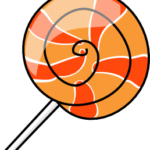Click here [1] for the Problem Extension Worksheet version of the Problems of the Week.
Click here [2] for an MS Word version of the Problems of the Week.
Click here [3] for the Canadian Problem Extension Worksheet version of the Problems of the Week.
Click here [4] for a Canadian MS Word version of the Problems of the Week.
 [5]Lower Elementary:
[5]Lower Elementary:
Question: Margie and Carrie are twins. Margie was born on December 17 at 11:45 PM, and Carrie was born on December 18 at 12:07 AM. How much older is Margie than Carrie?
Answer: 22 minutes older
Solution: The date changes from December 17 to December 18 at 12:00 AM. There are 60 minutes in an hour, and 45 minutes is 15 minutes away from 60 minutes, so Margie was born 15 minutes before midnight. 7 minutes later is when Carrie was born, so Margie is 15 minutes + 7 minutes = 22 minutes older than Carrie.
 [6]Upper Elementary:
[6]Upper Elementary:
Question: Barb’s birthday cake has 1 more candle than the number of years she has been alive. If 1/2 of the candles are blue, 1/3 of the candles are green, and the remaining 4 candles are yellow, then how old is Barb?
Answer: 23 years old
Solution: In order to compare the fractional parts, we need to give them the same denominator – in this case, 2 × 3 = 6. 1/2 × 3/3 = 3/6 of the candles are blue, and 1/3 × 2/2 = 2/6 of the candles are green. This means that 3/6 + 2/6 = 5/6 of the candles are blue or green, leaving 1 – 5/6 = 1/6 of the candles yellow. If 1/6 of the candles is the same as 4 candles, then the whole number of candles must be 6 × 4 = 24. If there is 1 more candle on the cake than the number of years Barb has been alive, then she is 24 – 1 = 23 years old.
 [7]Middle School:
[7]Middle School:
Question: Jenny is making a number of treat bags for her birthday party guests. She buys a bag of 50 lollipops, 8 of which are blue raspberry-flavored. Before distributing the lollipops amongst the treat bags, Jenny randomly picks 3 lollipops to keep for herself. Whatever she picks, she keeps. What is the probability that all 3 lollipops Jenny picks are blue raspberry-flavored? Round your answer to the nearest hundredth of a percent.
Answer: 0.29%
Solution: The probability that the first lollipop Jenny picks will be blue raspberry-flavored is 8 lollipops out of 50 total lollipops = 8/50 = 4/25. If she picks this flavor, then the probability of the second lollipop being the same flavor is 8 – 1/50 – 1 = 7/49 = 1/7. If she picks this flavor for the first and the second, then the probability of the third lollipop being the same flavor is 7 – 1/49 – 1 = 6/48 = 1/8. The probability of all of these events occurring is 4/25 × 1/7 × 1/8 = 4/1,400 ≈ 0.29%.
 [8]Algebra and Up:
[8]Algebra and Up:
Question: Nick, Rose, and Leif are decorating for their friend Angie’s surprise party. Nick can put up decorations in 1.5 hours, Rose can put up decorations in 2 hours, and Leif can put up decorations in 3.5 hours. How long will it take them to put up decorations if they all work together? Round your answer to the nearest minute.
Answer: 41 minutes
Solution: We need to combine Nick’s, Rose’s, and Leif’s decorating rates by addition. Choosing a common denominator, Nick’s rate is 1/1.5 = 28/42, Rose’s is 1/2 = 21/42, and Leif’s is 1/3.5 = 12/42. Their combined rate of decorating is 28/42 + 21/42 + 12/42 = 61/42, or 61 parties in 42 minutes. To find their combined rate for 1 party, we set 61/42 equal to 1/x (1 party in x minutes). Using cross products, we find that x = 42/61 of an hour = 42/61 of 60 minutes = 42/61 × 60 minutes ≈ 41 minutes.